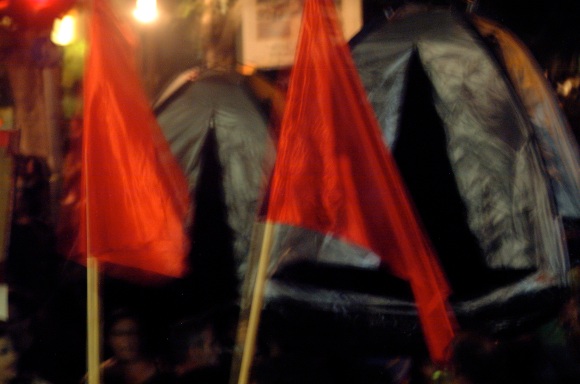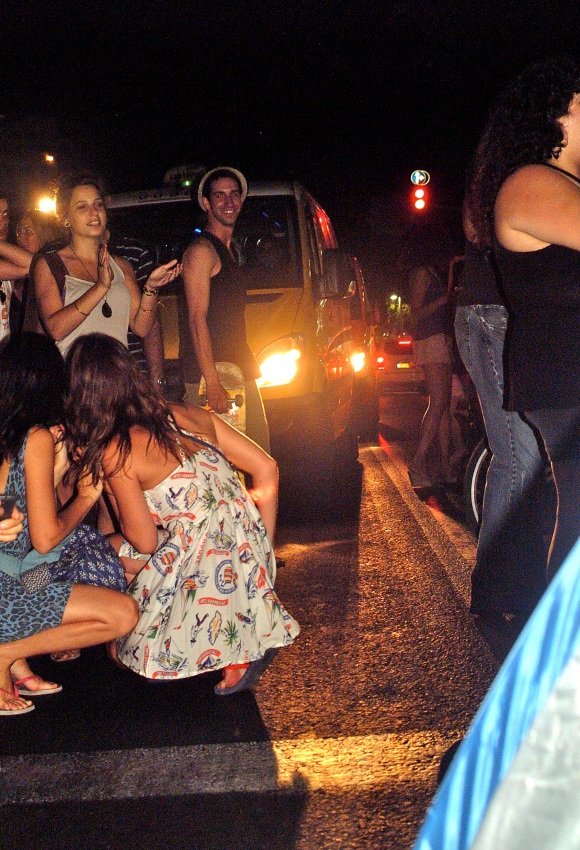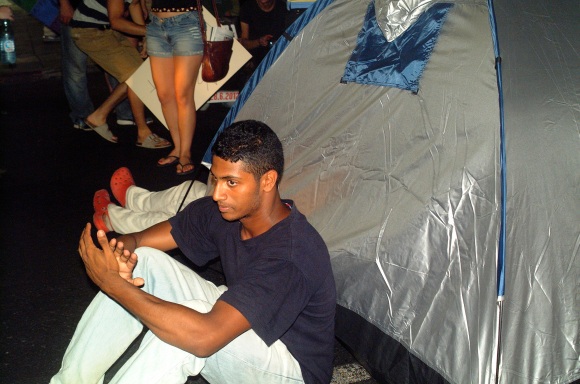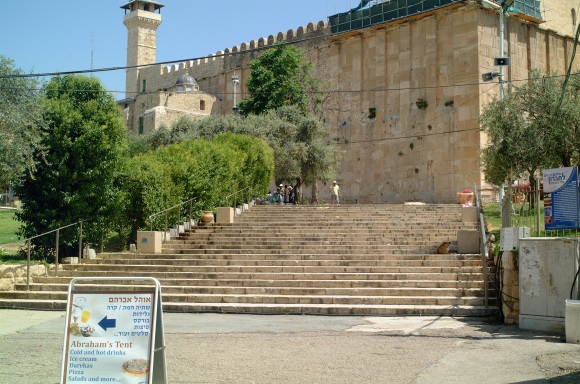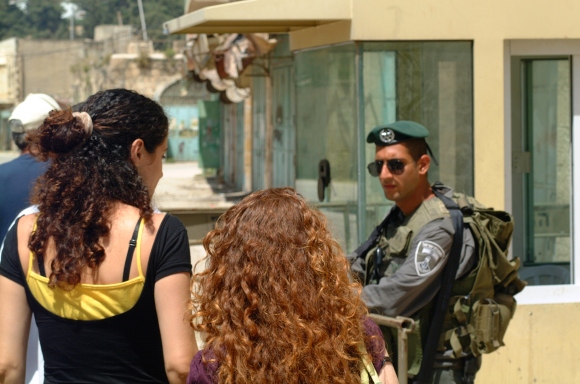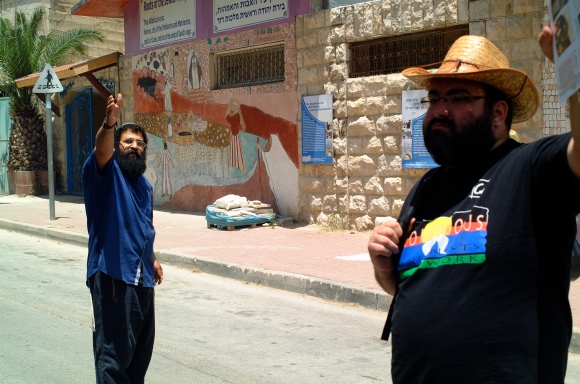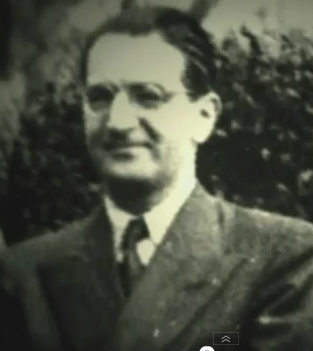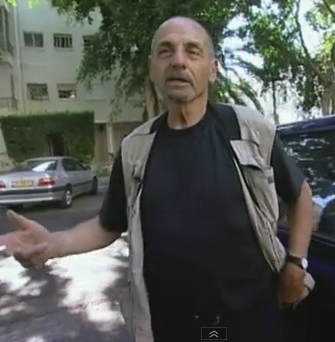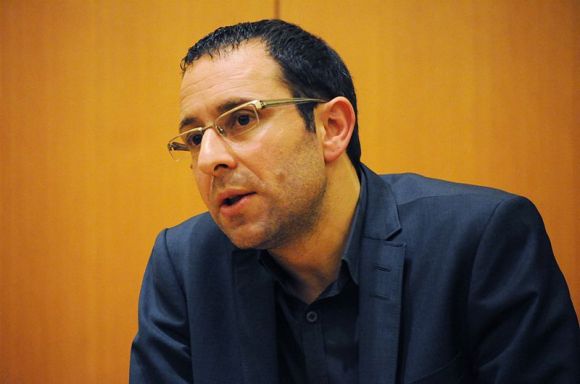Senior member of major British-Jewish organisation asked what will be the community’s response to the rise of Naftali Bennet’s Jewish Home party and his controversial plans to annex “Area C” (62%) of the West Bank.
The Internationalist
A blog about Israel / Palestine, the Middle East and International Affairs
Category Archives: Media
AUDIO: Question to Peter Beinart on Liberal Values in Israel
Peter Beinart is an accomplished author and journalist who first shot to fame with his controversial 2010 article, “The Failure of the American Jewish Establishment, and then again with the book, “The Crisis of Zionism”. He is also known more recently for his New York Times Op-Ed in March 2012 which called for a “Zionist boycott movement” – boycotting goods manufactured in the Israeli settlements while strengthening pre-1967 Israel.

Peter Beinart speaking at an event sponsored by the Center for American Progress Action Fund (photo credit: CC BY-ND 2.0 license, Center for American Progress Action Fund flickr user)
In this audio clip I pose the question to Beinart via video conference from London: how can the Jewish Diaspora have any impact on a society whose main institutions were shaped and founded by members of the “Second Aliyah” wave of immigration, which was not necessarily characterised by Western Liberal values.
Can we tackle the challenges of “tomorrow” without the wisdom of “yesterday”?
LISTEN (HEADPHONES RECOMMENDED): At the 2012 Israeli Presidential Conference, Harvard Professor Niall Ferguson outlines the four categories of predicting the future, inspired by history and bizarrely, Donald Rumsfeld.
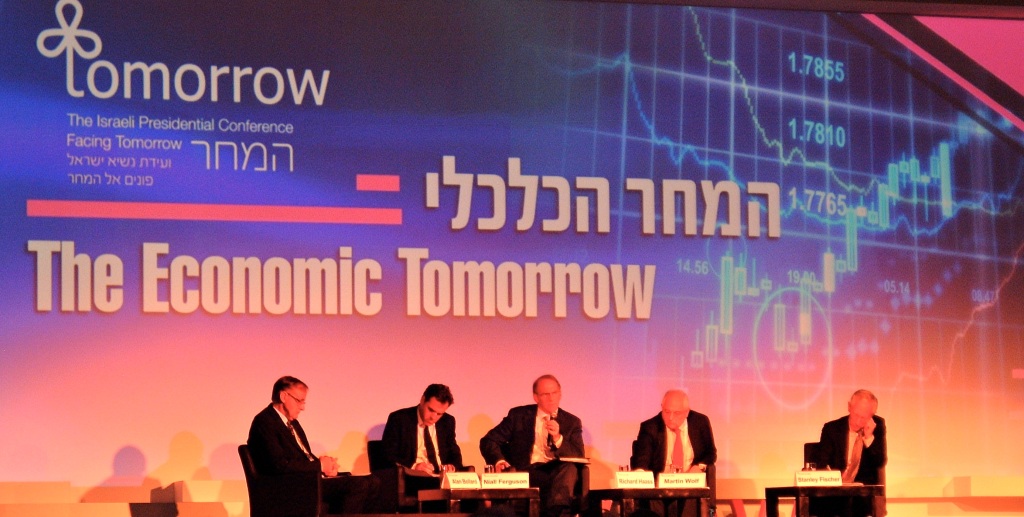
The assembled speakers during the plenary session focusing on the issue of the economic future for the world. (Far-Left): Alan Bollard, Governor Bank of New Zealand. (Centre-Left): Niall Ferguson. (Centre): Richard Haas, President Council on Foreign Relations. (Centre-Right): Martin Wolf, Associate Editor Financial Times. (Far-Right): Stanley Fishcher, Governor Bank of Israel (photo credit: Daniel Easterman).
Professor Niall Ferguson, the acclaimed Harvard and Oxford historian, economist, consultant and television personality, once again graced the glitzy light-effect laden stage of the fourth annual Israeli Presidential Conference in Jerusalem last month. The conference, organized under the auspices of the industrious octogenarian President Peres, is one of the largest in the Jewish world, attracting over 5,000 participants and 200 speakers from Israel and abroad.
Criticized by some as an incoherent and disjointed affair, lectures, speeches and workshops featured everything from psychology to the Arab spring, to the rise of Asia and cloud computing. However, the over-riding theme of the conference was essentially about thinking and planning for the future or “tomorrow”. Something Israelis, even by their own admission, are not terribly good at.
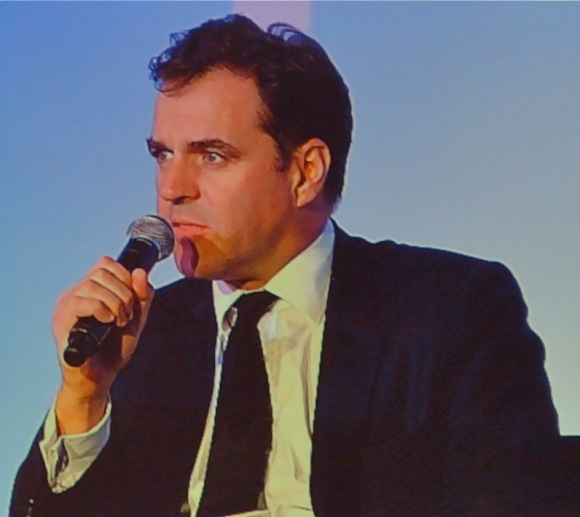
Professor Ferguson on the big screen during his speech at the 2012 Israeli Presidential Conference
(photo credit: Daniel Easterman).
As usual the conference organizers were able to secure a star-studied array of high-profile personalities from the worlds of politics, technology, economics and science including Henry Kissinger, Tony Blair, Google Chairman, Eric Schmidt, world-renowned sexologist “Dr Ruth” and even Zionist infant terrible, Peter Beinart. But out of all these highly regarded and accomplished individuals, perhaps none were able to encapsulate the challenges of “tomorrow” quite so ably and succinctly as Professor Ferguson. Probably this is because very few people in the world have the same command that Ferguson has over such a variety of distinct yet inter-related subjects. From the history of the British Empire to high finance and the intricacies of macroeconomics, to his understanding of the importance of technology; not only does Ferguson seemingly know it all, but crucially he knows how to explain it all, and he does so in a compelling and user-friendly fashion.
This year, Niall Ferguson in his own words “conjured up the spirit of Donald Rumsfeld” by structuring his lecture according to the famously clunky categories of “known knowns” and “known-unknowns” first propounded by the much-maligned Former Secretary of Defense during the Iraq War.
So what will be the most serious challenges of tomorrow Professor Ferguson? Well, the most obvious one or “known known” as Ferguson insists on calling it, is the ongoing economic crisis plaguing the United States and Europe. When governments on both sides of the Atlantic were forced to bail out the banks for their profound recklessness and ill judgment, the tremendous mountains of debt they incurred were then of course transferred to the balance sheets of sovereign states. While a second great depression was narrowly avoided in the short-term, the western world is now reeling from what can best be described as a all-mighty economic hang-over after binging on enormous sums of credit in the form of numerous budgetary and monetary stimulus packages.
The so-called “PIGS” economies of Portugal, Ireland, Greece and Spain have so far fared worst in this latest round of global economic misery, but Ferguson also thinks that the US is not so far behind despite the fact that it is still (barely) the largest economy in the world. If the bond markets finally catch wind of the precarious state of America’s finances, Ferguson believes (as he has stated elsewhere) that we could literally be in for a world of trouble. As yet, it is difficult to predict when this tipping point will be, but barring a radical change in policy, it is hard to see how the US will be able to evade this outcome indefinitely. Meanwhile, Western economies will continue to sputter along at infuriatingly low or even minus growth rates.
In terms of the next category of “known unknowns”, these are as Ferguson says, things we think are going to happen, but don’t really know when or where. For Ferguson, this is essentially the category of future military conflict and war, namely in the Middle East where the Syrian civil war is still raging and a possible pre-emptive strike against Iran still looks likely. And then of course there is the continued failure on the Palestinian track, which Ferguson forgets to mention. The PA under Abbas and Fayyad are becoming increasingly unpopular and their hold on power over the restive populations of the urban sections of the West Bank seems to be slowly weakening. A sudden outpouring of violence and anger in the West Bank in the wake of continued Syrian instability could plunge the region into further chaos and misery.
Skipping over the third category of “unknown unknowns” which essentially deals with the destabilizing effects of rapid and unforeseen technological advancement, we now move on to final category of “unknown knowns”, which Ferguson himself has confusingly titled. Despite the perplexing nomenclature, this is perhaps the most important category. Drawing on major historical events as our guide, we see that wherever there is a dramatic improvement in living standards and a rising middle class, there is also an accompanying rise in revolutionary political sentiments. Nowhere is this most true today, than in China, the great economic and geopolitical story of our time. If the growing legions of middle class Chinese start demanding western political rights as well as western brands and economic standards, we could potentially see much greater instability in China with consequences for the whole world. As Ferguson warns, when great powers change places, and a monumental “reconvergence” between different empires occurs, the ensuing process is not usually smooth and painless.
According to Ferguson, this last category is not just the most important, it is also the one that only those familiar with history and the lessons of “yesterday” can employ for the good of tomorrow.
WATCH: Eugene Kaspersky: Flame virus has opened a “Pandora’s box” for global terrorists, cyber weaponry much easier to produce than conventional military hardware.
In dramatic conference, founder of Kaspersky Labs tells Tel Aviv press corps that release of Flame could usher in “the end of the world as we know it.” Calls on nation-states to cease and desist from cyber weapons development for the safety of future generations
(N.B. PLEASE WATCH ALL FOLLOWING VIDEO WITH HEADPHONES).

Eugene Kaspersky at Tel Aviv University on Wednesday
Eugene Kaspersky, the CEO of Kaspersky Labs told reporters in Tel Aviv Wednesday (6 June 2012) that the recent discovery of the so-called “flame” virus could mark the beginning of a terrifying new era in cyber-warfare and terrorism.
When asked what the planet would look like after a worldwide cyber-terrorist attack, Kaspersky’s answer was surprising: “Die Hard 4”, he responded, the last instalment of the popular Bruce Willis action movies. The film’s plot revolves around a group of hackers wreaking havoc on the U.S. by taking control of transportation, infrastructure and military systems. “In this movie, Hollywood has taught the possibilities of cyber-war to the bad guys”, said Kaspersky.
At the Tel Aviv University press conference, Kaspersky called on the global bodies such as the UN to take steps towards developing a framework of international law and cooperation to deal with the new threat posed by cyber-warfare. This is the only way to solve the problem says the Anti-virus magnate, as no anti-virus or security software can prevent outbreaks like this from occurring in the future.
However, there are some in Israel who have attempted to downplay the importance of Flame. Zvi Netiv for example, a security expert at NetZ Computing contends that Flame has been “over-hyped”. In response, Timor Tsoriev, Chief of Staff at Kaspersky Labs, told the Israeli Internationalist that such claims were ridiculous and completely erroneous.
“Flame is a totally unique phenomenon”, said Mr Tsoriev. “It’s incredibly complex and has been evolving year upon year, going through multiple versions while active in the wild. “In short, Flame is a masterpiece. It marks a new and unprecedented step in the development of malicious programs,” he said.

My photo from Kaspersky press conference featured on Times of Israel frontpage, June 6th 2012
In particular both Kaspersky and Tsoriev are worried that terrorists, cyber-criminals or so-called “hacktivists” could get their hands on the sophisticated code of viruses such as Flame, thus unleashing mayhem on a global-scale. At present many states possess the know-how and capability to develop highly sophisticated cyber-weapons including lesser-known computing heavyweights such as Romania or Portugal for example. Even states like Iran which may not have the expertise at the moment to develop weapons-grade software, can easily recruit or even kidnap engineers in the future warns Kaspersky.
“I’m scared, believe me” he said, “if we continue developing weapons like this and going down this path, I’m afraid it could be the end of the world as we know it. The world will become a very different place.”
MUST SEE: Lapid lambasts Bibi-Mofaz deal in America, but could be ultimate beneficiary
Skip to 05:00 for start of Yair Lapid’s speech to congress of Rabbinical Assembly rabbis.
In an eloquent speech to the Rabbinical Assembly of Conservative Judaism in Atlanta, US, Lapid passionately told the audience that most Israelis belong to the “conservative” [stream] but don’t know it yet”.
As I wrote in my opinion piece on the startling political turn of events which took place yesterday, I speculated that Mofaz took this initiative in order to bypass the ultra-orthodox parties and pass much needed electoral reform legislation to ensure that their power is permanently curtailed.
Lapid was highly critical of the move and bemoaned the fact on his facebook page that the deal represented a return to the “old politics” of corrupt practices and the sacrifice of “principles for jobs”. On the contrary I would say that Mofaz’s actions could mean that Lapid will actually end up as a major beneficiary of this development in the medium to long-term.
What Lapid fails to understand is that Mofaz grasped a historic opportunity which doesn’t come around very often. This unprecedented coalition provides the wide political cover necessary to make real changes away from the current proportional representation system which gives disproportionate power to the Haredi parties relative to their real electoral and demographic strength. Current trends show the ultra-orthodox population is continuing to grow exponentially, so this problem is likely to only grow more pronounced in the coming years. While we should respect the rights of the ultra-orthodox community to practice their form of Judaism as they see fit, they should not be granted the power to impose their extreme brand of the religion on the rest of the population. This is the current status-quo in Israel today, mainly because of how the system is set-up and their astute manipulation of rules of the game for their own narrow interests.
If Mofaz and Netanyahu can change the political status-quo by reforming the electoral system, it would actually benefit moderate parties such as Yair Lapid’s “Yesh Atid” (there is a future) which represent the views of the vast majority of moderate Israelis. It is all very well and good standing up for such noble principles as ensuring equal rights for all streams of Judaism as Lapid declared, but if the requisite political power to make those decisions is not there, such principles turn into empty words without action. The Netanyahu-Mofaz move may not have been pretty, but if you want to defeat your political foes and gain power to implement what you believe in, sometimes you have to play dirty and surprise the opposition. This is exactly what the Prime Minister and the new honorable Minister without Portfolio have done.
WATCH UPDATE:
ISRAELI BIG BROTHER CONTESTANT SAAR SZEKELY TELLS AL JAZEERA ENGLISH THAT FRIENDSHIP WITH ARABS IN ISRAEL IS A “POLITICAL ACT”, WHILE FORMER ISRAELI NEGOTIATOR, DANIEL LEVY SAYS CURRENT ISRAELI POLICIES ARE A “BOOMERANG”, DO NOT “DELIVER SECURITY”
In wide ranging discussion assessing the impact of Peter Beinart on the Israel debate within the US Jewish community, Daniel Levy, Co-Director of Middle East Task Force at New America Foundation says history of anti-Semitism, Holocaust cheapened by influential voices in American Jewish establishment
Israel’s Mako Channel 2 TV station ran a prominent story on their website today (April 8, 2012) covering the recent interview of Saar Szekely, the so-called “radical leftist” Big Brother contestant appearing on Al Jazeera’s “The Stream” program in English. The interview has been widely reported by many of the major Israeli media outlets including NRG (Maariv newspaper online edition), Nana (Channel 10 TV), Walla and of course Mako-Keshet which produces the Big Brother show in Israel.
The mainstream Israeli media has all led as their main headline: “Szekely says that he would not enlist in the IDF today”. Although they all mentioned Szekely’s comments on friendship with Arabs as a “political act”, the Israeli press tended to do so right at the end of their articles, as a relatively unimportant footnote.
This morning, the presenters of the channel 2 morning show, “Yom Hadash” (new day), Dahlia Mazor and Yoaz Limor, expressed disapproval of Szekely’s appearance on Al Jazeera saying that it was wrong for him to criticise Israel on “Arab media,” (even though Szekely actually appeared on the channel’s English version). However, they agreed that prior to that it was legitimate for him to express his political views on Israeli primetime television.
Another major contributor taking part in “The Stream” program together with Szekely, and completely absent from any Israeli coverage was Daniel Levy, son of controversial member of the British House of Lords, Michael Levy, and in his own right a serious figure in numerous Israeli peace negotiating teams. Levy was a member of Israeli delegations from Oslo 2 in 1995, to the Taba summit in 2001 and most recently was one of the lead drafters of the Geneva Accords. Today Levy spends most of his time in Washington D.C. working for the think tank, the New America Foundation, as the co-director of their Middle East Task Force department.
During the course of the Al Jazeera show, Levy made a number of provocative comments challenging the American-Jewish establishment regarding the debate on Israel in the US. First he said that the accusation of “anti-Semitism” and the use of the Holocaust is “hurled around” too often thus cheapening the term and the history of the Jewish people. Levy also referenced the response of Atlantic journalist, Jeffrey Goldberg to Peter Beinart’s Zionist BDS arguments as an example of the kind of unhelpful knee-jerk reactions in the Jewish community to deep criticism of Israeli policy.
Later in the program, Levy also heavily criticised Israeli government and military favouring security at all costs while compromising international ethical and legal norms. He stated that “we’re all better off” in a rule-based society and a world in which rules and rights are not abused. He also argued that such abuse in the name of security will only, “engender hate, anger and frustration”. This will result in a “boomerang” effect which will be self-defeating, only serving to undermine our security interests in the long-term, Levy added.

 Workers for private security company gather late afternoon on Rothchild Boulevard before annual Lyla Levan (white night) evening of culture and partying. In the end security personnel provided no resistance against demonstrators storming the official music stages organised by the Mayor’s office.
Workers for private security company gather late afternoon on Rothchild Boulevard before annual Lyla Levan (white night) evening of culture and partying. In the end security personnel provided no resistance against demonstrators storming the official music stages organised by the Mayor’s office.
 As soon as the protesters began to unfurl tents, a media scrum quickly developed with both national and foreign outlets at the ready. The Israeli media has been far less sympathetic to the social justice movement this time around, with instructions from on high to provide the demonstrators with less coverage. Demands have also been made that journalists approach the story with a more critical eye.
As soon as the protesters began to unfurl tents, a media scrum quickly developed with both national and foreign outlets at the ready. The Israeli media has been far less sympathetic to the social justice movement this time around, with instructions from on high to provide the demonstrators with less coverage. Demands have also been made that journalists approach the story with a more critical eye.


